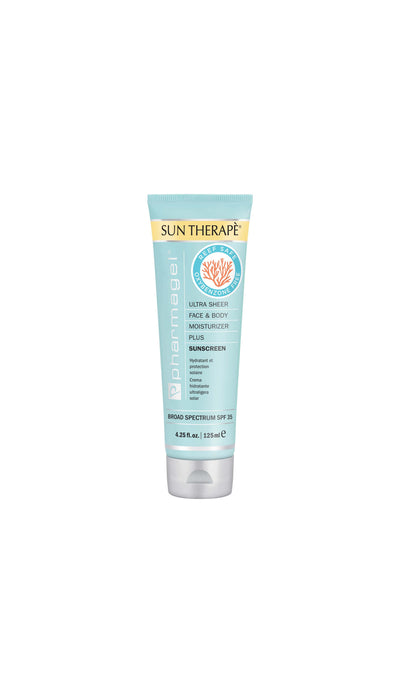Sweating and Why It’s Good for the Skin
Sweating is a natural body process that happens when we are feeling hot or uncomfortable. While sweating is associated with odor and the need for products to block the sweat, it offers numerous benefits to your health. Beneath the discomfort is a remarkable mechanism working to maintain the body temperature and protect your skin.
Continue reading to learn about the benefits of sweating. Let's start by digging into the mechanism of sweating.
The Science Behind Sweating
First and foremost, sweat is produced by sweat glands distributed across our skin. Some areas, such as the armpits, have more sweat glands, but they all serve the same purpose.
Sweating helps the body regulate temperature. When the body senses a temperature rise, whether it's due to exercise or increasing heat, it activates the sweat glands. This action causes sweat secretion onto the surface of the skin through tiny pores on the skin. The sweat then evaporates from the skin, leaving behind a cooling effect.
The Benefits of Sweating for the Skin
Besides slowing down the body during exercise or exposure to heat, sweat glands play a crucial role in ensuring the skin remains healthy. Below are the benefits of sweating for the skin.
- Detoxification: Sweating plays a minor though important role in eliminating toxins from the body. As sweat is secreted to the skin's surface, it carries along salts, urea, and even some heavy metals, pollutants and metabolic waste products from our system. Although the liver and kidneys are our primary organs for detoxing, some substances can be expelled in small quantities through sweating, promoting overall skin health.
- Cleansing: Secondly, sweating helps remove impurities and unclog pores. The moisture released during sweating helps cleanse the skin by loosening dirt, oil and dead skin cells accumulating on the surface as we go about our day. As a natural cleansing process, sweating reduces the risk of developing acne and numerous other conditions.
- Moisturizing: Thirdly, sweat moisturizes the skin. While sweat is associated with odor, you might be led to think that sweating is bad for the skin. Contrary to common belief, sweat is an excellent moisturizer. The thin layer of moisture left on the skin's surface as sweat evaporates acts as a natural moisturizer and can be especially beneficial for dry skin.
- Improved Circulation: Blood circulation is a necessary process of the body—it promotes the health and vitality of skin cells by delivering oxygen and nutrients. When blood circulation is at its optimum, the removal of waste products and free radicals, which can contribute to premature aging and dull-looking skin, is also promptly eliminated. Sweating during physical activities improves blood circulation, therefore, promoting skin health.
- Enhanced Skin Barrier: The skin is crucial in preventing bacteria, pollutants and allergens from entering our bodies. Sweat contains a blend of salts that create a barrier that reinforces the skin’s natural defense mechanisms, making the skin more resilient.
- Stress Relief: Stress is both emotionally and mentally taxing, but did you know it also affects your skin's health? Sweating can promote relaxation and help reduce stress levels. This happens when the body is engaged physically through activities such as exercise or even saunas, which help trigger the release of endorphins, "feel-good" hormones that contribute to a healthier-looking complexion.
How to Maximize the Benefits of Sweating

Having learned about the benefits of sweating for the skin, here are ways to maximize its benefits for optimal results. Here are seven effective ways to maximize the benefits of sweating:
- Stay Hydrated: Besides eliminating waste and toxins, sweating takes water from the body. Drinking adequate water replenishes your body's fluids, maintains the body's fluid balance, and supports efficient sweat production.
- Cleanse After Sweating: After working out, it's essential to fit in a cleansing routine. Removing the dirt and impurities accumulating on your skin will give you a fresh and radiant complexion; however, it is best to use a gentle cleanser to avoid stripping away natural oils.
- Moisturize: Following your cleansing routine, replenishing lost moisture is critical. If you are unsure what moisturizer to use, consult a dermatologist or esthetician to determine a moisturizer that provides adequate hydration without clogging the pores.
- Protect Your Skin: Sweating can dissolve even water-resistant sunscreens, which is why it’s important to reapply if you’ve been sweating profusely, and also to reduce exposure to the sun especially during the middle part of the day.
- Exercise Regularly: Regular physical activity promotes sweating, which in turn increases blood flow. The result is adequately nourished skin and a radiant complexion. For a start, you can begin with moderate-intensity exercise for at least 30 minutes daily.
- Seek Professional Advice: Lastly, get a professional opinion. Consulting a dermatologist or esthetician before deciding on the care plan for your skin helps you understand your skin type. You can discuss expected results and receive comprehensive guides and recommendations to meet your specific needs.
Maximizing Sweating to Benefit the Skin
Sweating is associated with odor and waste and can sometimes be an inconvenience; however, this mechanism is responsible for many more essential functions, such as cleansing the skin, improving blood circulation and maintaining the integrity of the skin.
By understanding the benefits of sweating, we can maximize this natural process to benefit our skin. The above measures of exercising, moisturizing and








